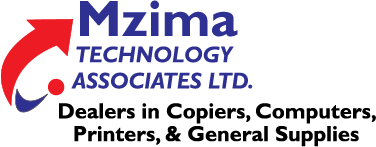Blog
Choose the right MFPs for your hybrid workplace
Courtesy: Kyocera Document Solutions
As your organization adopts a new hybrid workplace strategy, you may find yourself tasked to equip your employees with the right devices to work from any location. Multifunction printers (MFPs) are key to enabling remote collaboration and productivity, but how do you choose the right MFP for your workers when there are numerous brands and models in the market, with different features and capabilities available?
Purchasing MFPs for your hybrid workplace can be a significant investment, so take the time to seriously assess your options. In this post, we share some tips on how to choose the best MFPs to meet the specific needs and preferences of your business and hybrid work environment. But first, why are multifunction printers the recommended device for hybrid workplaces?
Why choose an MFP?
MFPs are popular for hybrid workplaces because they combine print, scan, fax and copy functions in one multi-tasking device, enabling remote employees to collaborate effectively with their colleagues. Additionally, their low purchase and running costs appeal to budget-conscious businesses. Compared to running multiple devices for each function, MFPs help organizations save on power bills and consumables, as well as office space, either at home or in a shared workplace.
Things to consider when choosing an MFP
It is important to choose an MFP that best fits your business needs – one that meets your requirements, integrates well with current systems, and saves you time and money in the long run. Here are a few areas to consider:
Business printing needs
These are some of the questions that can help you assess your business printing needs:
- Does your company print color or black and white documents?
- How much printing does your company do?
- What print quality do you require?
- How many workplaces make up your hybrid work environment?
- How many employees do you have and what are their connectivity requirements?
Once you have a clearer picture of your printing requirements, it will be easier for you to determine the number of MFPs and the functionalities that your business needs.
Total cost of ownership (TCO)
When considering an MFP, you must also look at the total cost of ownership. This not only includes the purchase price but also the long-term expenses associated with your printer, such as consumables, maintenance and repair costs. TCO is particularly important in a hybrid workplace where you will be operating more MFP devices than you would in a traditional office set-up, potentially driving up costs if you don’t choose cost-effective printers.
It’s important to assess MFPs based on more than just the purchase price, as the lifetime printer costs can be two to three times the initial investment.
Environmental impact
Is the printer eco-friendly? Consider brands that support reducing your carbon footprint in the manufacturing, distribution, maintenance and disposal/recycling of your MFPs. As speed and quality of printing matter, so does energy efficiency, particularly for remote employees. An energy efficient device is good for the environment and, at the same time, reduces your overall printing costs.
Kyocera’s printers, for instance, include the cartridge-free ECOSYS technology that is capable of printing up to 600,000 pages without the need to replace the print drum. This translates to a lower cost of consumables and a significant reduction in disposable waste.


